Elizabeth Minchilli's Blog, page 18
May 16, 2018
ricotta, cherry jam & balsamico tart
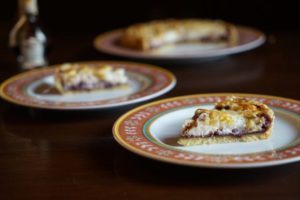
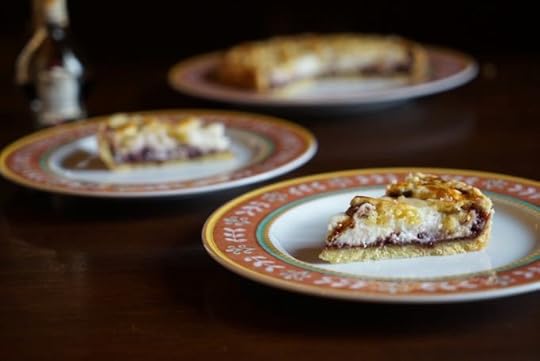
One of the best things about working on my book, Eating My Way Through Italy, during the last two years was the chance to dive deep into subjects that I took for granted (pizza for instance) or that I though I knew everything about (olive oil for instance). But one of the most incredible experiences I had was to go back and revisit very first acetaia I had ever been to, over 15 years ago, and take a refresher course on Aceto Balsamico Tradizionale.
Although I have written about this incredible, history-laden product many times before, and have used all manner of true balsamico in my cooking, I realized that I still had a lot to learn. Because like so many of the best things you can put in your mouth in Italy, each bite is complicated, rich and full of stories and history, culture and tradition. And you can never stop learning. (that is the theme of my book, in case you were wondering).
For the full story on what I took away during my most recent visit to a barrel-packed bell tower just south of Modena you’re going to have to get my book, which will be published on May 29 (12 days, but who’s counting?). (you can pre-order it now)
But I’m not going to leave you completely empty-handed. Or empty-stomached. Here is one of my favorite recipes in the book, the one that I took away from my visit to Vecchia Dispensa.
Also? I took SO MANY PHOTOGRAPHS that didn’t make it into the book, I just wanted a chance to share them with you!!
PS: If you are in New York on May 23 or Los Angeles on June 5, I’ll be teaching classes at Eataly on how to make this tart and more.
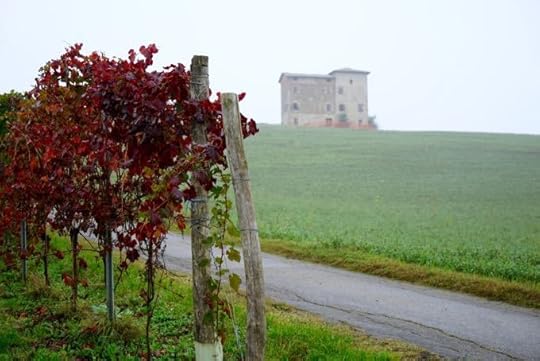
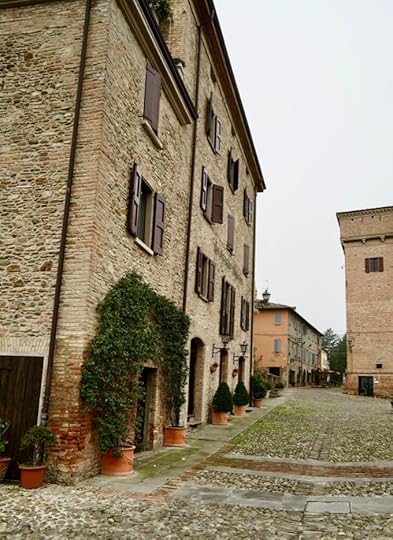

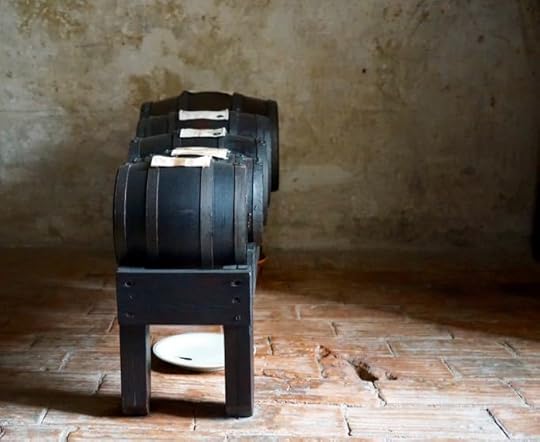
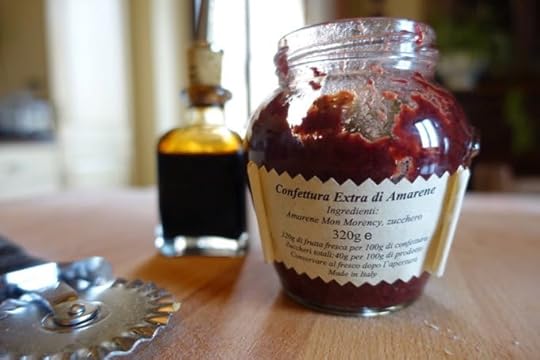
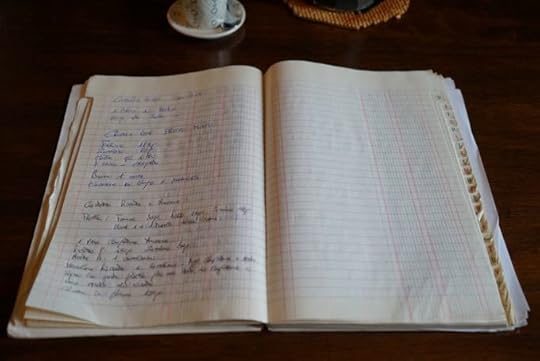
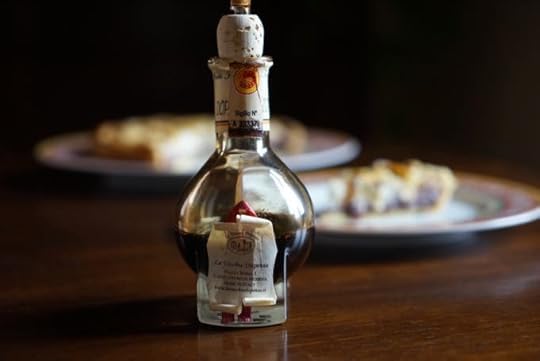
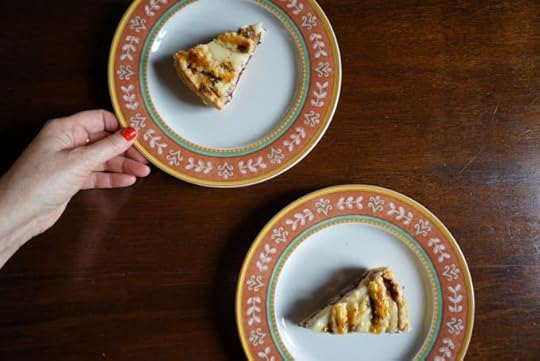
Ricotta, Cherry Jam and Balsamico Tart
The area around Modena is well known for its sour cherries and Roberta, at Vecchia Dispensa, uses them to make jams which find their way into this tart
Ingredients
300 gr / 2 1/2 cups flour
150 gr 2/3 cup butter (room temp)
100 gr / 1/2 cup granulated sugar
1 tsp grated lemon zest
1 egg yolk (room temp
250 gr. / 1 cup cow milk ricotta
100 gr sugar / 1/2 cup granulated sugar
200 gr / 1 cup sour cherry jam
1 Tablespoon Aceto Balsamico di Modena
Aceto Balsamico Tradizionale
Instructions
For the Dough: Put all the flour, butter, sugar, lemon zest and egg yolks in a bowl and mix, using your hands, until it comes together.
Let rest in fridge for 30 minutes.
In the meantime prepare filling:
Preheat oven to 350F/ 180C
Beat the sugar and ricotta till very smooth.
Stir the Balsamico to the jam
Line a tart pan with a removable rim with parchment paper.
Roll out 2/3 of the dough to form the crust out onto a floured surface and then transfer to the tart pan. Don’t worry if it breaks, the dough is very forgiving. Just patch it together.
Spoon out the jam onto the crust. Then carefully spread out the ricotta on top of that, using the back of a spoon to smooth it out.
Using the leftover dough, roll out and make strips and top in lattice pattern.
Brush dough with egg yolk and bake in oven at 180 for about 40 minutes. Let cool before serving.
When ready to serve, place a slice on individual plates and drizzle with Aceto Balsamico Tradizionale.
For more details about this recipe as well as my travels all over Italy, I’d be thrilled if you purchased my book: EATING MY WAY THROUGH ITALY
And for more on eating in Italy please download my app, Eat Italy. At the moment available on iTunes, but any minute now it will be issued for Android too! (stay tuned and sign up to my newsletter to keep up to date, the sign up is right below this post)
And if you love all of this kind of stuff, then please also subscribe to my YouTube channel for fun food videos. I’m going to be posting a lot more in the next few months, with all the footage I filmed while working on this latest book.
The post ricotta, cherry jam & balsamico tart appeared first on Elizabeth Minchilli.


May 7, 2018
dinner party – spring in rome
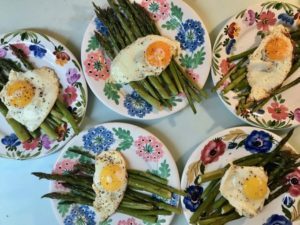
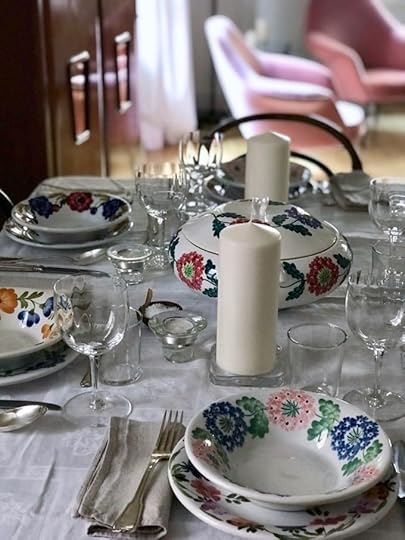
It’s pretty easy to grasp the theme of this dinner party: spring vegetables at the height of the season. At this time of year I find myself simply going to the market, grabbing all the goodness, and then barely doing anything to them to bring together a dinner. And for this meal in honor of my editor of my new book, visiting from New York, it seemed perfect.
For this meal I really did just walk across the street to our local market and came away with my little shopping cart ( yes, I have one of those ‘old lady’ carts and it embarrasses Sophie beyond belief) full of artichokes, fave beans, fresh peas, asparagus, spring onions mint, parsley and strawberries. I even managed to find room for some freshly baked almond cookies from the baker there.
The most time consuming part of the entire preparation was shelling the peas and fave. But since I’m currently addicted to Lost in Space on Netflix, I took this as an opportunity to watch an entire episode on my computer perched on the kitchen table. FYI: you can figure about 3 kilos of shelling per episode.
Menu
Aperitivi
Although it was supposed to rain (spring!) it didn’t (spring!) and so we had our drinks up on the terrace (spring!). Negronis for everyone, with big fat green olives and taralli, both from Puglia (and bought at the market on Via Baccina)
Primo
Fave, artichokes and peas went into the Roman spring stew Vignarola
Secondo
Asparagus Bismark: my favorite combo of barely cooked asparagus topped with one perfectly fried egg. The recipe appears in my new book.
Contorno
Steamed new potatoes with a bit of butter and salt and tons and tons of parsley.
Dolce
Bowls of ripe strawberries dressed with lemon and a bit of sugar, and store bought almond cookies
Setting the Table
Plates: If you’ve been following me on Social media then you may be aware of my new obsession for the plates that grace the table. I first discovered these dishes, made by Ginori in the 50’s-70’s on Instagram and have fallen hard. They were made in Mondovi’ and while the dishes themselves are factory made, each one is hand painted. I’m not quite sure how many patterns there are, but I’ve become border-line obsessed with collecting them. It’s kind of like baseball cards, I guess. But plates. If that makes any sense. But I can justify it since I do use them, both in my home as well as in our cooking space Monti Kitchen. I’m also planning on taking some of the overflow up to Umbria (yes, there is overflow). Rather than set the entire table with one pattern, as they were meant to be, I’m a fan of mixing and matching them to create a chaotic, flower-filled, table-top garden of plates. Fun fact: The centerpiece tureen actually belonged to my mother-in-law.
Dishes holding olives and taralli are from Solimene in Vietri.
Candle Holders: All votive and other candle holders from Ikea.
Glassware: Water glasses from Ikea and wine glasses Baccarat. The grappa glasses are vintage Venetian from Domenico’s aunt. And those cute little frosted Negroni glasses were a gift from Nonnino years ago.
What to Drink
We started out with Negronis on the terrace, then switched over to a bottle of Pecorino with our Vignarola. I also opened a bottle of Montepulciano d’Abruzzo for the main course. And of course, as always, grappa galore for dessert.
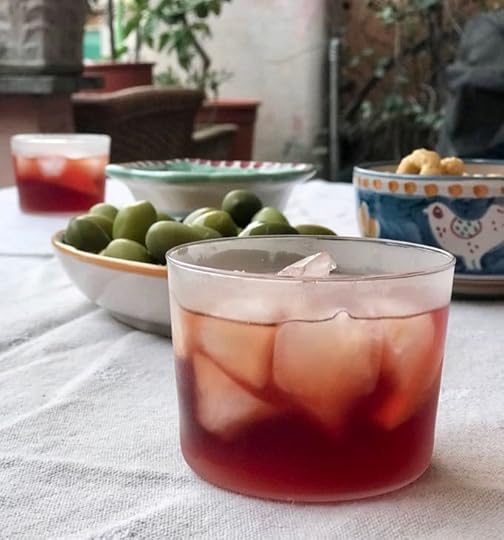
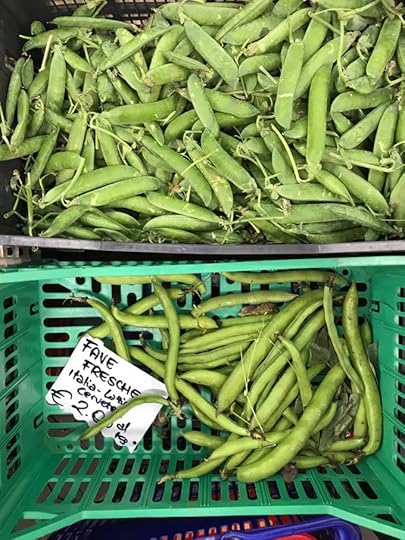
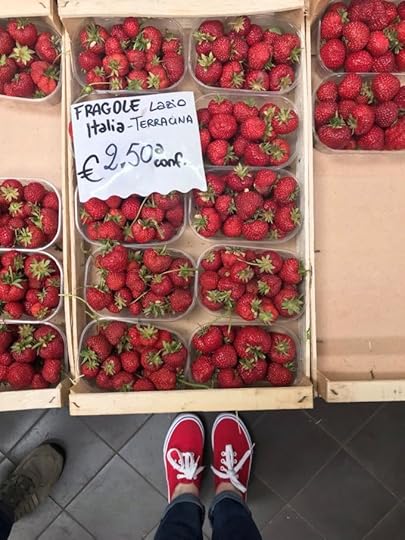
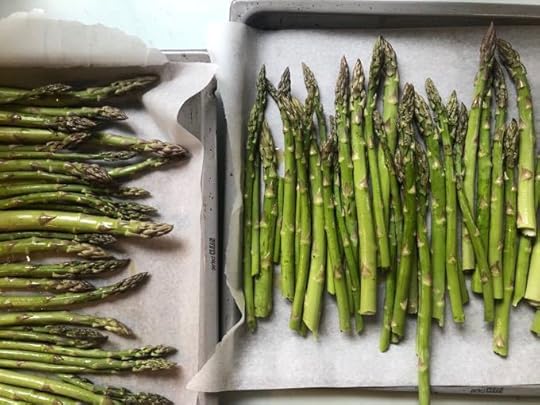
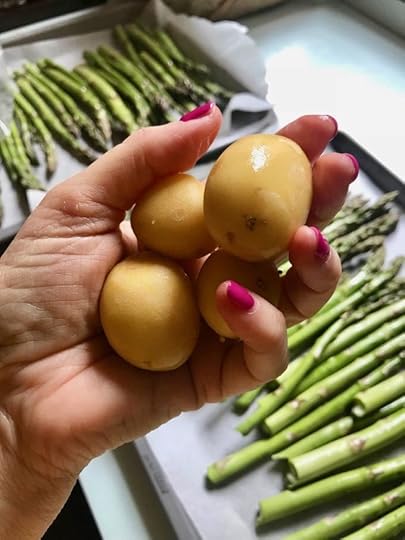
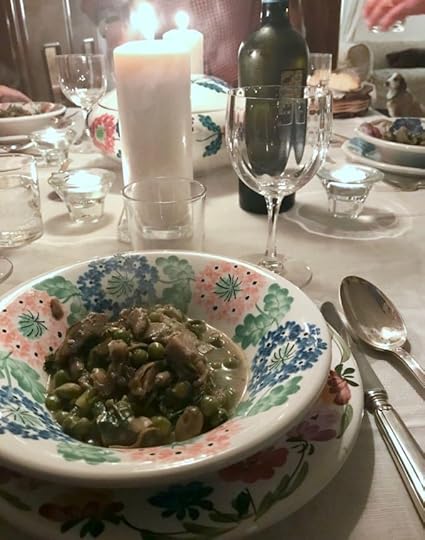
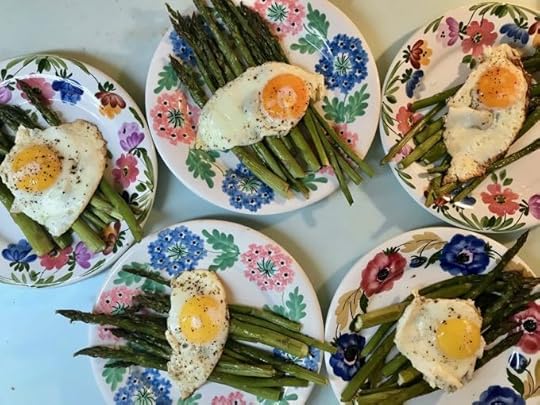
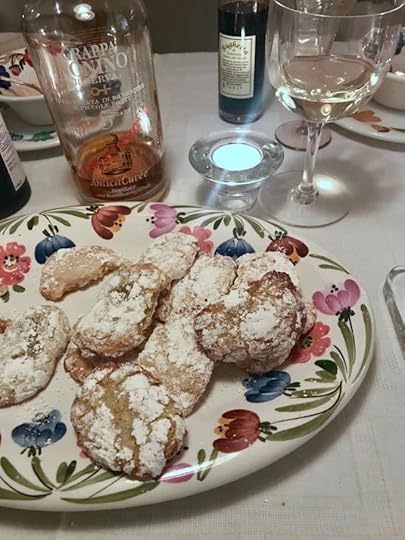
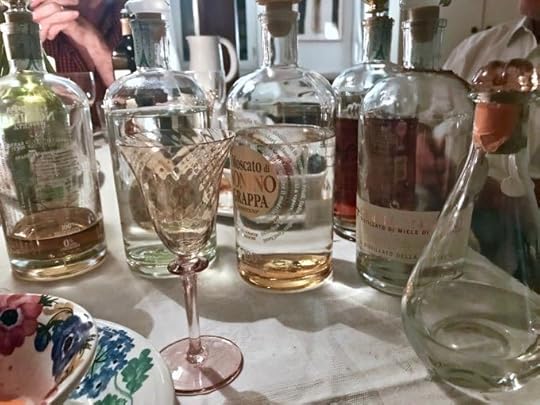
The post dinner party – spring in rome appeared first on Elizabeth Minchilli.


April 29, 2018
asparagus + rice salad with salami + herbs
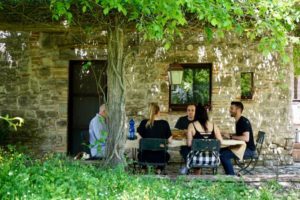
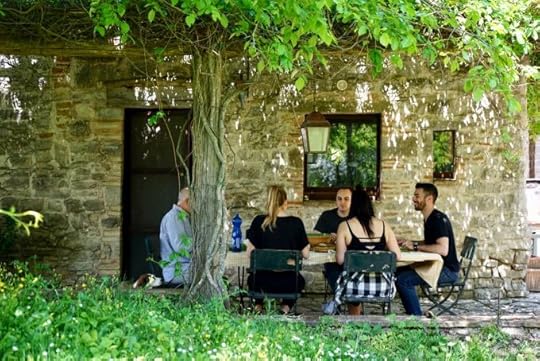
Salads are not just about vegetables. In fact, some of my favorite salads are either meaty, cheesy or both. And I think this is why I am currently in love with the book Six Seasons: A New Way with Vegetables. Even though it’s a book about vegetables, it is not vegetarian by a long shot. Yes, vegetables are the backbone of the book, but they are brought to new levels not just through a thorough understanding the different seasons, but also by adding things like cured meats, nuts, cheese and bread to turn ‘salads’ into hearty, filling dishes.
One of the things I love about the book is that he really does address seasonality at a micro level. Sine the author, Josh, was first a chef, and then managed a farm, he is very attuned to the differences between, say, an early season asparagus and a late season asparagus. Which means that the recipes really work: you won’t find yourself trying to make a salad with raw asparagus with the last-of-the-season tough spears. I know it sounds a bit much, but there really is a huge difference in this kind of attention to detail. And if you are going to go to the trouble of going to the farmers market, or growing your own produce, then this kind of attention pays off.
Another thing I love about this book is the emphasis on layering seasoning. He doesn’t just ‘season to taste’ at the end, but makes sure that every stage of every ingredient is seasoned appropriately. And since each vegetable is always going to be different, taste again and again at the end until you get it perfectly right.
This weekend I lugged the book (it’s big!) up to our house in Umbria. I knew I wanted to make one of the spring salads with salami and so made sure I had that on hand. My memory of the other ingredients in the salad was fuzzy. And in fact, I had merged two different salads in my mind, both involving the addition of salami (brilliant) but one with a with artichokes and farro, and another with fava beans and farro. Since I didn’t have farro, or artichokes or fava beans for that matter, I kind of improvised, and made a salad that very much embraced the spirit of both recipes, as well as the glorious spring weather. It was the perfect centerpiece to lunch under the pergola.
My only regret is that I didn’t make double the amount. I thought I had made a ton, and was sure there’d be leftovers. But I guess I’m not used to cooking for a group of twenty-somethings. Sophie and her friends gobbled it up. And so did we.
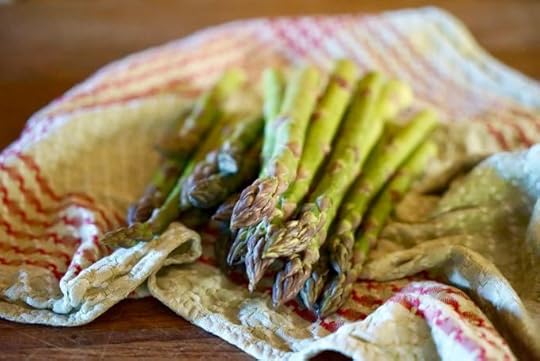
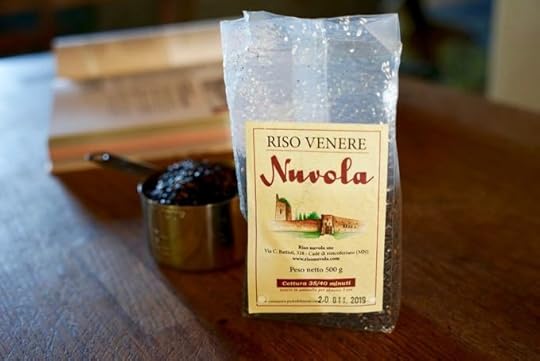
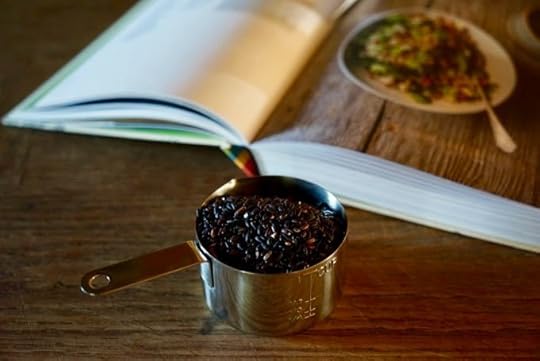
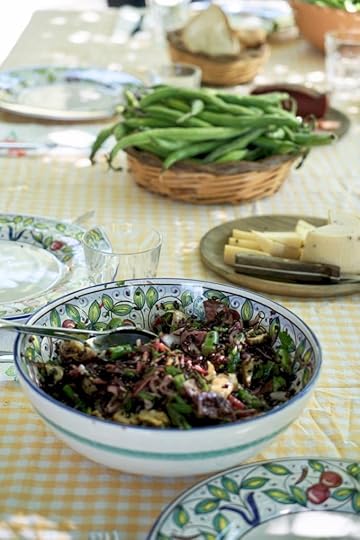
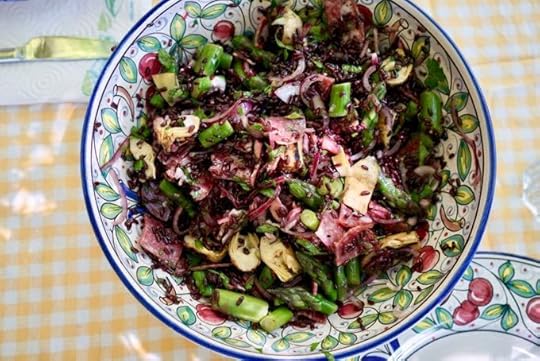
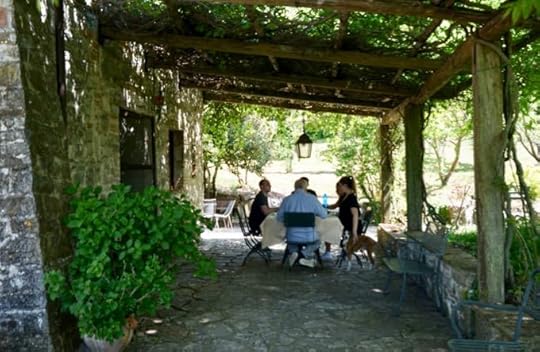
Asparagus & Rice Salad with Salami & Herbs
The three main ingredients in the salad are some type of grain, some type of salami, and some type of vegetable. As I mentioned I completely swapped out all the main ingredients for different ones, but still very much preserved the spirit of the salad. Instead of using farro, instead I chose to use a dark red variety of Italian rice called Venere. It is a cross between a aromatic Asian rice, and a shorter grain Italian one. I love it in salads.
And while I used asparagus, I’m certainly going to be trying this with the last of the artichokes. And I’m also thinking of adding a handful of peas.
Ingredients
1 cup of Venere rice (or farro)
2 cloves garlic, peeled and smashed
extra virgin olive oil
1 bay leaf
dried chili flakes
salt
1 pound of asparagus, trimmed and cut into 1-inch pieces
1/2 large red onion, very thinly sliced
1 tablespoon wine vinegar
1 cup mixed fresh herbs (mint, parsley, basil)
1 lemon
3 ounces / 1 etto of salami (cut thickly and then into half moons or quarters)
5 or 6 artichoke hearts, preserved in olive oil (optional)
Freshly ground black pepper
Salt
Instructions
To cook the rice: pour about a tablespoon of olive oil in a pot. Add the garlic, chili flakes (about 1/4 teaspoon) and heat over medium heat until the garlic starts to become fragrant, about 1 minute. Add the rice, and stir for about 3 minutes. Then add 4 cups of water, 2 teaspoons of salt, and the bay leaf and bring to a simmer. Let cook until the rice is tender, about 15 to 20 minutes.
Drain the rice, and lay out on a plate to cool off. Discard the bay leaf.
In the meantime prepare the asparagus. Using your hands snap off the tough ends. Then cut them into 1 inch pieces. Bring a large pot of salted water to boil. Add the asparagus and cook for 2 to 3 minutes. Drain and place immediately in a bowl of ice water to chill. Drain and let dry.
Assemble the salad in a medium bowl. Add the cooled rice, the drained asparagus, the chopped herbs, artichoke hearts, salame and mix with the vinegar and salt and pepper to taste. Taste and adjust for seasoning, adding juice from a half lemon. Serve at room temperature.
This recipe was adapted from Six Seasons: A New Way with Vegetables, by Joshua McFadden and Martha Holmberg
The post asparagus + rice salad with salami + herbs appeared first on Elizabeth Minchilli.


April 18, 2018
squid + artichokes
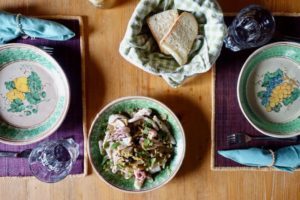
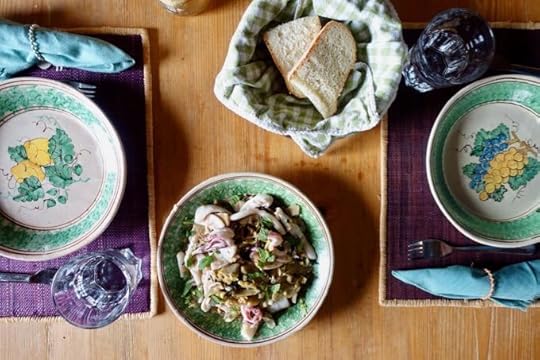
Ever since Melissa was here in Rome I have squid on the brain. When we were discussing what she should cook during the cooking classes she lead, her first choice was squid. As she rightly said, “People are scared of squid, they just don’t know how easy it is to cook. I can show them.” But somehow, we just never made it to squid. So I was left wanting.
I’ve been making up for lost time by cooking it about every other day for the last two weeks. Since a new fish shop opened up in the market across the street from our home in Rome, it’s beyond easy to run over and pick up a pound of squid. Not only do they always have it, they happily clean it for me so it’s ready to go.
When it comes to squid there are two ways to cook it so that it is tender. You can either stew it long and slow (as in this recipe) or else cook it over high heat, quick and fast. Anything in between the two results in the rubbery texture many people associate with squid.
The following recipe takes advantage of spring artichokes. After trimming and cooking the artichokes with a bit of olive oil and garlic, you throw in the cut up squid at the last minute and cook for just 90 seconds. Really. That’s all it takes. The squid turn from sort of translucent to opaque, and you’re done.
The pairing of squid with greens in a Tuscan tradition, and one I’ve written about in the past here. Calamari in Inzimino is one of the slow stewed dishes, where the squid braises along with the greens to form a kind of stew. . But since I wanted to use artichokes, and didn’t want them to completely fall apart, I opted for the quick method of cooking instead.
This is definitely a spring time dish, and while I used artichokes here, I’m going to be trying it out with asparagus and peas as the season moves forward. Because I still have squid on the brain and I don’t see being cured any time soon.
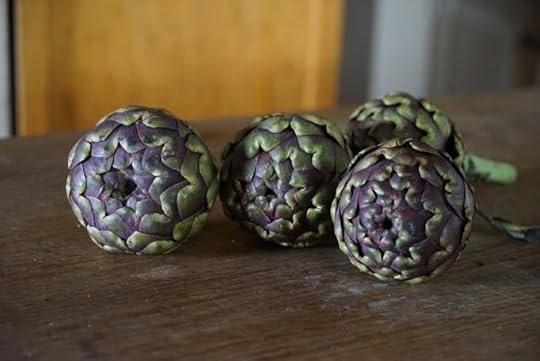

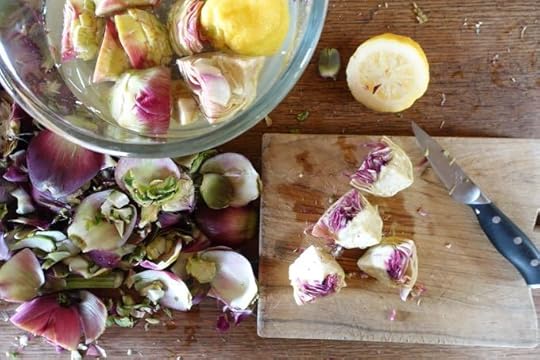
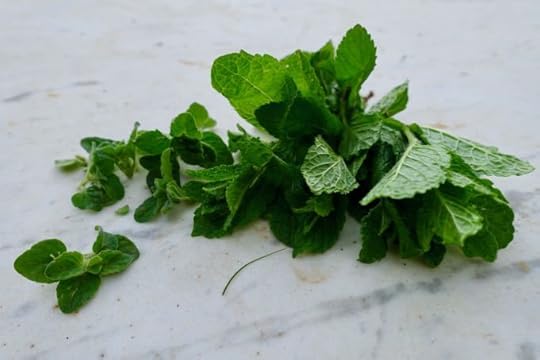
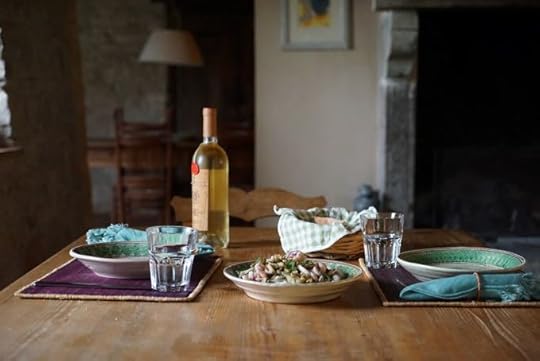
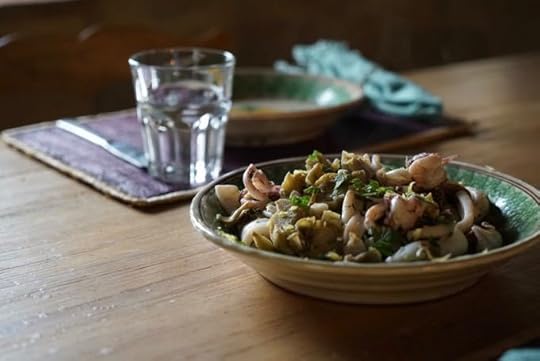
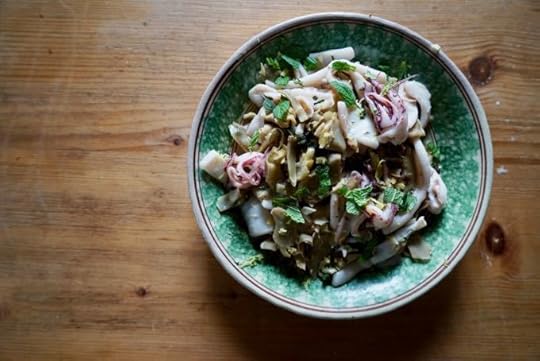
squid and artichokes
Prep 1 hour, 20 mins
Cook 40 hours
Total 41 hours, 20 mins
Yield 4
Ingredients
6 large globe artichokes
2 tablespoons of extra virgin olive oil
2 lemons
1 teaspoon salt
2 cloves of garlic, peeled and chopped
1 bunch of mint, chopped
1 1/2 pounds of squid, cleaned
1/4 cup dry white wine
Instructions
Before you begin trim your artichokes, removing the tough outer leaves, to reveal the inner tender core. Squeeze half of one of the lemons into a big bowl of water, and as you trim the artichokes rub then with the other half and place them in the water. (see this post for more details).
Once you’ve got them trimmed, Pour the olive oil in a 10 to 12 inch skillet and heat over medium low heat.
One by one take the artichokes out of the water, pat dry, and cut in quarters, Remove any choke and then slice thinly, length wise. As you cut, add them to the pan with oil, and stir.
Once you have added all the artichokes, add the salt, and raise the heat to medium. Add 1/4 cup of water and cook until tender. This can take from 10 to 20 minutes depending on your artichokes.In the meantime cut your cleaned squid into 1×1 inch size pieces. If the tentacles are large then cut them in half.
Once the artichokes are tender, add half the mint and garlic. Let cook 2 minutes more, then add the squid.
Stir and cook for 90 seconds over medium high heat. Add the wine and cook for 45 seconds more.
Turn off the heat and add the rest of the mint, and a few squeezes of lemon to taste. You can also add some freshly grated lemon zest if you have some untreated organic lemons.
Stir and serve immediately.
The post squid + artichokes appeared first on Elizabeth Minchilli.


April 12, 2018
making mozzarella & burrata by hand {video}
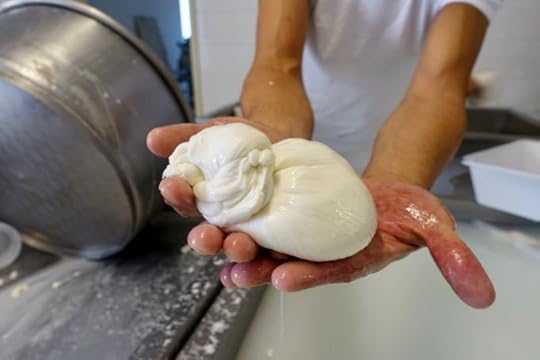
One of the things that I am constantly explaining to people is how different the same food/ingredient can be from one region to the next in Italy. Even words like pizza means something completely different depending if you are ordering one in Naples or Rome. The ‘pasta’ you order in Bologna has nothing to do with the dish you order in Salerno. And don’t even get me started on olive oil.
People are always asking me which is the ‘best’. Which is the ‘best’ restaurant in Rome? Which is the best olive oil to use? Which is the best kind of pasta to buy? But best is relative. It has to do with your own personal taste, and certainly has to do with where you.
One of the most delicious differences to explore in Italy is mozzarella. Ask any Italian about mozzarella and the general response is that the best is made from the milk of water buffalos and comes from the area just south of Naples, in Campania. But this is only referring to a very specific type of fresh cheese made only in that area. And only cheese made in that area, from buffalo milk, is legally allowed to be called ‘mozzarella.’ Everything else – made from cow’s milk from the rest of Italy – is called Fior di Latte.
While I’ve had great Fior di Latte all over central and southern Italy I think my favorite comes from Puglia. Maybe I’m biased since Domenico is from Bari, and I think that over the course of our marriage I’ve probably consumed my weight in fior di latte at his mother’s kitchen table. But I learned early on, from my mother in law Rosa, that not all Fior di Latte are created equal. She would always go to specific stores that received the freshest cheeses twice daily.
I’m happy to say that the mozzarella and fior di latte obsession gene has been passed on to Sophie. She was so enamored of these glistening white orbs that she decided to spend last summer learning how to make them, in the little down of Cutrofiano in southern Puglia.
She not only learned the secrets of transforming the crumbly curds into sleek elastic ropes to be twisted into knots, balls and braids, but also learned how to make burrata. Burrata is the decadent Pugliese cousin of fior di latte. To make burrata you first make fior di latte and then tear it into strips, which get mixed with heavy cream. You then form a purse out of another piece of fior di latte, stuff it with the cream mixture, and tie the whole thing with knot at the top. It’s kind of like the turdunken of the mozzarella world.
And if you just can’t be bothered to tear open a burrata to get to the good stuff inside? Then straciatella is for you. Straciatella translates as ‘rags’ and in Puglia straciatella refers to the ‘rags’ of fior di latte in heavy cream. You can buy this in Puglia and it is a dangerous thing. At least with the burrata there is a limit. But with straciatella you can just buy kilos of it! Two of the best ways I’ve had it recently was when Melissa was in town and she topped the straciatella we had shipped up from Puglia with blood oranges. And then there are the simply crostini that are served at Flavio’s in Rome, topped with one perfect anchovy.
I got a chance to visit the caseificio where Sophie was working this past summer to see her teacher, Michele, in action. One of the things that makes this specific fior di latte and burrata so special is that it is made in small batches, completely by hand (much different than the last video I posted about making mozzarella). And before you get all huffy about not using gloves: making mozzarella by hand is all about touch and feel. So even though the water is boiling hot, the cheese maker needs to touch and feel the cheese with his bare hands to make sure the curd has reached the right consistency.
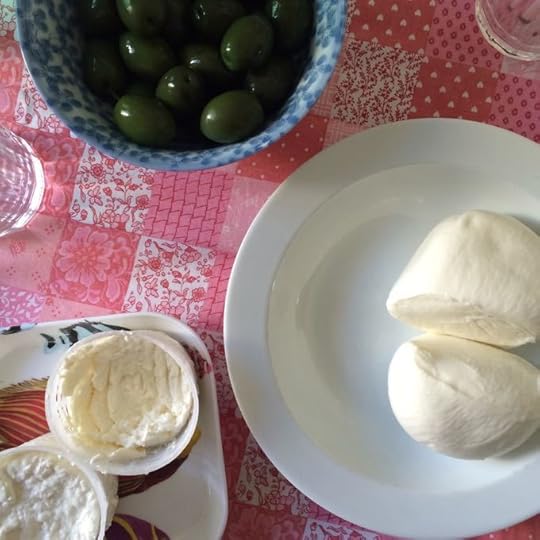
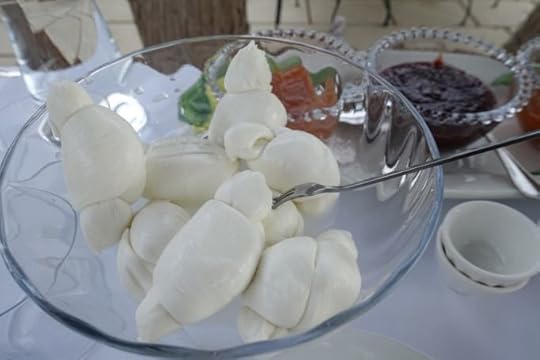
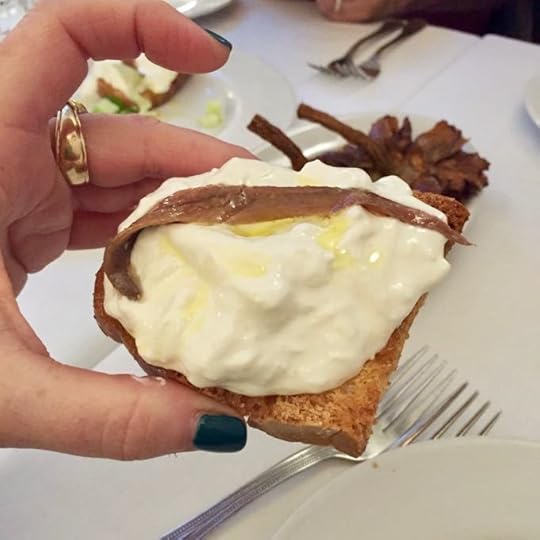

If you happen to be in Cutrofiano:
Caseifcio Russo
Via Carlo Pisacane 22, Cutrofiano
+39.0836.513.005
For more of my favorite places to stay and eat in Puglia make sure you download my app, Eat Italy. Eat Italy is a free app, with many cities and regions available as in-app purchases (Venice, Rome and Florence) or completely free (Puglia, Umbria, Torino and Milan).
And if you’re curious about my adventures in Puglia and the rest of Italy you can preorder my newest book, Eating My Way Through Italy : Heading Off the Main Roads to Discover the Hidden Treasure of the Italian Table. The book will be published on May 29, 2018.
The post making mozzarella & burrata by hand {video} appeared first on Elizabeth Minchilli.


April 3, 2018
dinner party: spring vegetables in puglia
This is only a summary of my latest post. To read the whole thing, click on "Title" above. This will lead you to my website.


March 27, 2018
dinner party: melissa clark in rome
This is only a summary of my latest post. To read the whole thing, click on "Title" above. This will lead you to my website.


March 12, 2018
a week in puglia with elizabeth & sophie
This is only a summary of my latest post. To read the whole thing, click on "Title" above. This will lead you to my website.


March 5, 2018
how to make fried artichokes {video}
This is only a summary of my latest post. To read the whole thing, click on "Title" above. This will lead you to my website.


February 21, 2018
making cacio e pepe with flavio {video}
This is only a summary of my latest post. To read the whole thing, click on "Title" above. This will lead you to my website.





